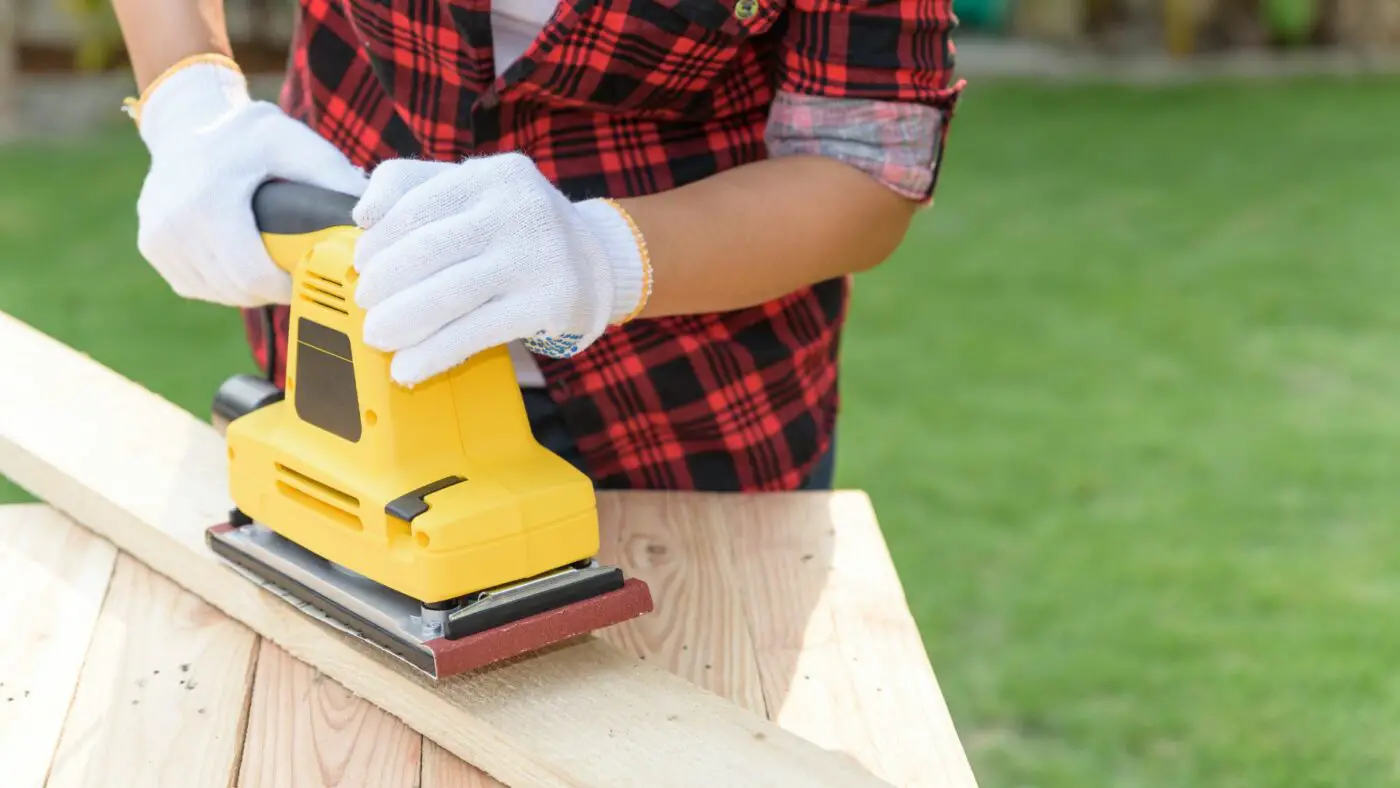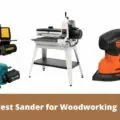Sander
Top Tips for How to Choose the Right Sander for Woodworking Projects
Picking the most suitable sander for woodworking projects is imperative to attain a smooth, quality finish. Even for metal workers and DIYers who focus on home projects, having the right sander could be the difference between a shoddy-looking project and a professional one.
Naturally, there is a wide range of sanders on the market, from the different types and their uses to the brands and their pricing, which makes finding the right one quite challenging.
For this reason, I have done research on your behalf and found several factors that you should consider when choosing the best sander for your projects. Even though this article doesn’t point to a specific product or brand, it will help you narrow down the plethora of options to a few ideas for your woodworking projects and skills.
Here are my top tips for how to choose the right sander for woodworking projects:
Different woodworking tasks call for varying sanders depending on the nature of the project. To choose the most suitable sander, here are the factors you need to consider:
Shape & Size of the Material
Among the many important factors you should consider are the shape and size of the material you will be sanding. This will also help to determine the type of sander you will require for the task. Big, even surfaces need a completely different sander from small workpieces with hard-to-reach areas.
Quality of Finish
Something else to keep in mind is the quality of finish you want to attain. Some sanding machines will achieve rough stock detachment, while others provide a much smoother finish.
Rate of Use
If you intend to put your sander to use frequently, you should purchase a top-of-the-line machine that’s both resilient and long-lasting and, hence can endure heavy utilization.
Type of Sander for Woodworking Projects
There are a handful of sanders used in the woodworking arena, each with its distinctive characteristics for serving different purposes or in various situations. Here they are:
Drum Sander
I’ll start with the drum sander, the largest and most solid option. However, you need to handle it carefully. You can use it in large areas or workpieces that need some serious sanding. For this reason, it is more suitable for professionals, particularly for eliminating bevels from prefinished floors. This turns them into more modern square-edged end products.
Drum sanders remove any deep scratches swiftly, though they can be dangerous if used by someone inexperienced.
I recommend cutting across the grain at 450 to effectively eliminate bevels in pre-finished surfaces for the first few passes to level the floor.
Random Orbit Sander
This is my favorite sander and with good reason. The random orbit sander holds a circular sandpaper and moves in a circular pattern as it vibrates to reduce the chances of making swirl marks on your workpiece.
Moreover, this type of sander is usually quiet and has changeable speeds, allowing you to pick between high and slow speeds depending on the task at hand.
Also, depending on your needs, you can choose the pistol-grip or palm-style random orbit sander. Again, I recommend trying out a few machines before purchasing. But, ensure the tool you pick sports a dust collection system as it helps to remove sawdust and other debris, which makes working easier and leaves your workspace clean.
Belt Sander
Here is yet another aggressive sander with a consistent 3 or 4-inch sanding belt, perfect for smoothing spacious, even surfaces like wooden floors. Additionally, it is just right for eliminating old finishes like varnish & paint and smoothing edges.
Plus, you can use this sander to work on multiple edges at the same time by clamping two or more workpieces together.
When it comes to making a choice, most professionals go for the 3 by 21-inch version. On the other hand, if you are a DIYer or novice, the best belt sander would be a 3 by 18-inch sander. Similarly, the 4 by 24-inch and 3 by 24-inch versions are better suited for heavier sanding projects involving huge workpieces, though they are more difficult to control.
Pro Tip: Choose a belt sander featuring a built-in dust collection setup to make cleaning up afterward easier.
I would recommend you begin with a coarse grit sander and upgrade gradually through the finer grits for much better and smoother results. Also, you should utilize both hands for improved control and keep the machine moving to prevent scratches and gouges.
Edge Floor Sander
The edge floor sander is a disk sander, ideal for sanding the floor edges straight up to the structure’s wall. For best results, you should tilt this device at an angle when you switch it on to prevent possible damage to the workpiece when you begin sanding.
Finish or Palm Sander
The palm sander has a square pad that moves in minor, circular motions. It establishes extra-smooth finishes and is excellent for finishing and reaching tricky corners. Nevertheless, it’s not built for heavy tasks.
It is the perfect choice for beginners and is reasonably priced.
For unmatched efficiency, this sander keeps small square-shaped sandpapers in position thanks to the clips that are spring-loaded. Something else I love about this machine is that it is lightweight, quiet, and somewhat easy to use since it moves in any direction.
Nonetheless, choose a model featuring a piercing plate, as it helps to make holes through the paper, which assists with dust collection.
Detail Sander
A detailing sander is lightweight, but unfortunately, it is too noisy. You can use it for small projects that need sanding in hard-to-reach areas and tight spots. Some versions come with a broad scope of attachments but don’t usually have dust collection systems; therefore, don’t forget to wear your dust mask for safety purposes.
For ultimate flexibility, pick a detail sander that’s compatible with extension plates, scrapers, and cutting blades.
Hand Sanding Block
Leave some space in your storage for this humble and incredibly useful hand-powered sanding machine. While it is slower than most of the sanders on this list, it offers you optimal control and easy access to tight spots.
Why You Should Trust Us
At Woodworking Tool Guide, we know one size doesn’t fit all! We cater to every woodworker, from beginner to pro, with insights and recommendations tailored to your skill level, project needs, and budget. We take the guesswork out of choosing the right tools, whether you’re tackling your first crafting a masterpiece for the ages. So grab your chisel, join our community, and let’s build something amazing together!
Woodworking Tool Guide wasn’t just born, it sprouted from a seed of passion for the craft. What started as a joyful exploration blossomed into a trusted online haven for fellow enthusiasts like you. We pour our love into meticulously chosen review selections, meticulous hands-on testing, and lab-backed insights, all to empower you with reliable, comprehensive information you can build on. So, grab your tools, trust our guidance, and let’s build something beautiful together!
Passion-Driven Expertise
Our journey started with a shared love for woodworking. The team behind the Woodworking Tool Guide is comprised of individuals who are not just writers but passionate woodworkers themselves. This shared enthusiasm ensures that our content is crafted with a deep understanding of the craft and an authentic appreciation for quality tools.
Top Tool Guides Online
Woodworking Tool Guide has rapidly ascended to become one of the premier online destinations for tool guidance. Our commitment to excellence and the accuracy of our information has positioned us as a reliable source for both beginners and seasoned woodworkers seeking trustworthy advice on the best tools for their projects.
User-Centric Approach
Our content caters to every woodworker, from rookies just starting out to seasoned pros tackling intricate projects. We tailor our insights and recommendations to your skill level, project needs, and budget, ensuring you find the perfect tools to match your unique woodworking journey. So step into your workshop, grab your tool belt, and let Woodworking Tool Guide be your trusted companion as you craft your masterpieces.
Continuous Support and Innovation
Woodworking is an ever-evolving craft, and so is our commitment to supporting you. We are dedicated to bringing you the latest information on woodworking tools, techniques, and trends. Our team is actively working to expand our content and bring you more valuable insights, ensuring that you stay well-informed in your woodworking adventure.
Hands-On Experience
Ditch the endless research rabbit hole! At Woodworking Tool Guide, we believe in actionable advice, not armchair analysis. We get our hands dirty, putting every tool through its paces in real-world woodworking scenarios. Whether it’s the precision of a table saw, the versatility of a router, or the tactile satisfaction of a handplane, we test for performance, durability, and user-friendliness. No more sifting through dry specs – we deliver practical insights you can trust to transform your woodworking dreams into reality.
Woodworking Tool Guide isn’t just a review site, it’s your trusted companion on the sawdust-filled path to woodworking mastery. Our expert team, led by veteran David Jones, meticulously tests and explains tools in terms you understand. We cut through the jargon, bias, and confusion with real-world insights and honest evaluations. Join our passionate community, where decades of experience, cutting-edge knowledge, and shared love for the craft come together to guide you every step of the way. So grab your chisel, buckle up, and let’s embark on this exciting woodworking adventure, together!
Conclusion
Now that I have narrowed down the options to seven main categories, I’m certain you will have an easier time finding the right Sander for Woodworking projects.
Keep in mind that handheld sanders are designed for medium and small-sized tasks, where flexibility and mobility are crucial. They let you work on various sections of your workpiece and are perfect for tasks that call for frequent modifications.
On the other hand, stationary sanders are ideal for large-scale works or where precision is imperative. They give you a stable sanding platform, which delivers more consistency and control.





